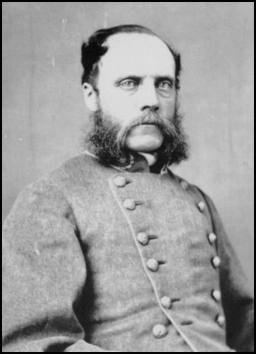Patrick Theodore Moore facts for kids
Quick facts for kids
Patrick Theodore Moore
|
|
|---|---|

Brig. Gen. Patrick T. Moore
|
|
| Born | September 22, 1821 Galway, Ireland, U.K. |
| Died | February 19, 1883 (aged 61) Richmond, Virginia |
| Buried |
Richmond, Virginia
|
| Allegiance | |
| Service/ |
|
| Years of service | 1861–1865 |
| Rank | Brigadier General |
| Commands held | 1st Virginia Infantry 1st Brigade / VA Reserve Forces |
| Battles/wars | American Civil War |
Patrick Theodore Moore (born September 22, 1821 – died February 19, 1883) was an important leader in the Confederate States Army during the American Civil War. He started as a colonel, leading the 1st Virginia Infantry Regiment. He was badly hurt in a battle early in the war. After his injury, he could no longer fight on the battlefield. Instead, he helped important generals and worked as a legal officer. He also led local defense groups in Virginia. Before the war, he was a merchant and a militia officer. After the war, he worked in insurance.
Contents
Early Life and Beginnings
Patrick T. Moore was born in Galway, Ireland on September 22, 1821. His family moved to Canada in 1835. Later, they moved to Massachusetts in the United States. His father worked there as a British consul. In 1850, Moore moved to Virginia. He worked as a merchant, buying and selling goods. He was also a captain in the Virginia local army, called the militia. By 1860, he lived in Richmond, Virginia.
Joining the War Effort
When Virginia decided to leave the United States in 1861, Patrick T. Moore joined the Virginia state militia. On April 21, 1861, he became a colonel, leading the 1st Virginia Militia Regiment. Later, on June 15, 1861, he became a colonel in the 1st Virginia Infantry. This unit was part of Virginia's temporary army. On July 1, 1861, his unit officially joined the Confederate States Army.
A Brave Soldier's Injury
Colonel Moore faced a tough challenge at the Battle of Blackburn's Ford in Virginia. This battle happened on July 18, 1861. It was just three days before a much bigger battle, the First Battle of Bull Run (also known as First Manassas). During the fight at Blackburn's Ford, Moore was hit in the head. This injury was very serious. It meant he could no longer lead his soldiers in battles on the field.
New Roles in the Army
Even though he was injured, Patrick T. Moore continued to serve. From October 1861 to May 1862, he worked as an aide-de-camp for General Joseph E. Johnston. An aide-de-camp is like a personal assistant to a general. They help with messages and plans. When General Johnston was hurt in the Battle of Seven Pines, Moore then became an aide-de-camp for Lieutenant General James Longstreet. He served Longstreet from May to July 1862.
Helping Generals and Courts
In December 1862, Moore was given a new job. He became a judge advocate general for a part of the Confederate army. This meant he worked on legal matters. He spent two years helping with court martial duties. Court martials are military trials. On April 28, 1863, he was officially made a colonel in the Confederate Army and a judge advocate general. In January 1864, he became the main judge advocate general for the Richmond area.
Leading Local Defenders
From May to December 1864, Moore took on another important role. He became a brigade commander for the Reserve Forces of Virginia. These forces were local defense troops. They helped protect their home state. He worked with Brigadier General James L. Kemper to organize these groups. On September 20, 1864, Patrick T. Moore was promoted to brigadier general. From December 1864 until April 1865, he led Brigade 1 of these Virginia Reserve Forces. These troops were important for defending Richmond.
Life After the War
The war ended in April 1865. Moore was not captured with other Confederate forces. He was later officially released in Manchester, Virginia, which is now part of Richmond. This happened on April 30, 1865. He received his pardon on June 14, 1865. After the war, Patrick T. Moore became an insurance agent in Richmond, Virginia. He passed away in Richmond, Virginia, on February 19, 1883. He is buried at Shockoe Hill Cemetery in Richmond.
Images for kids


